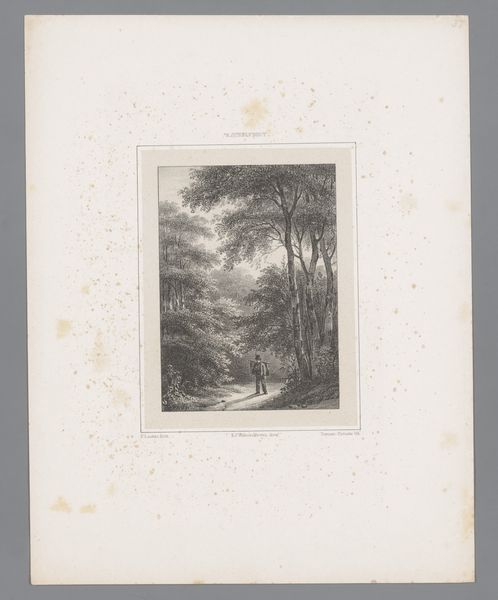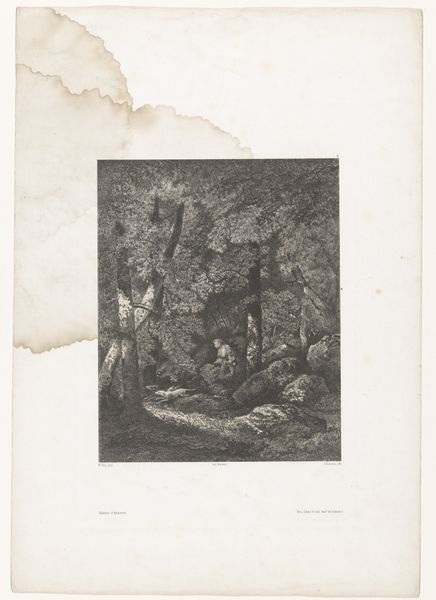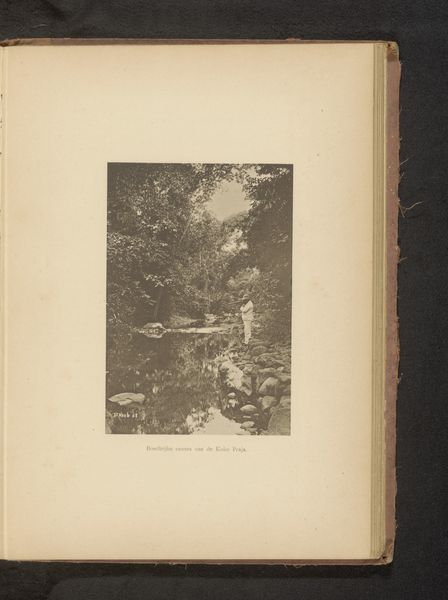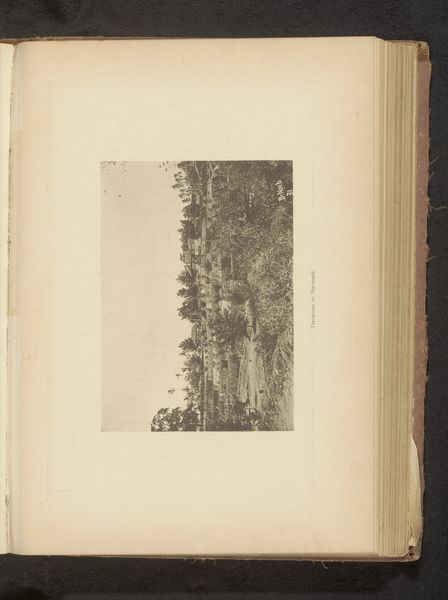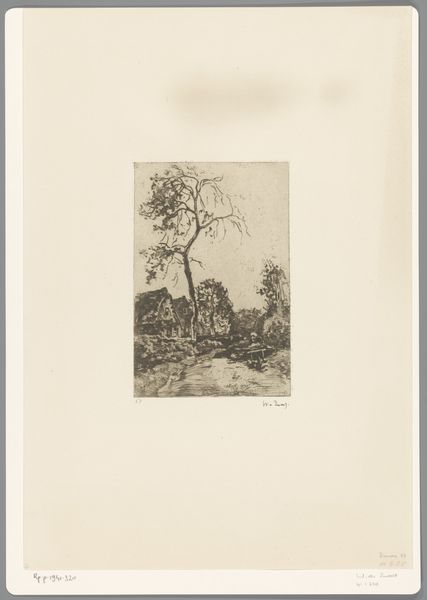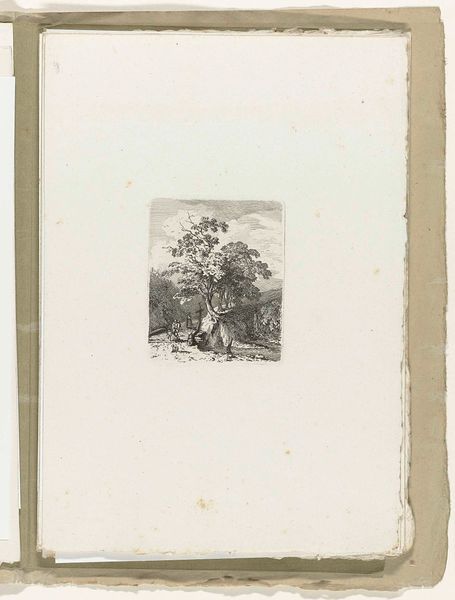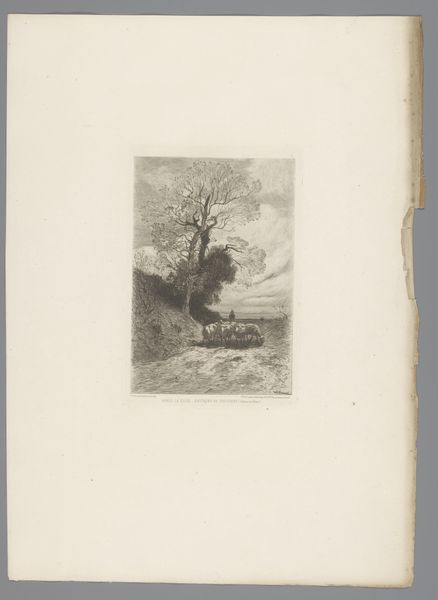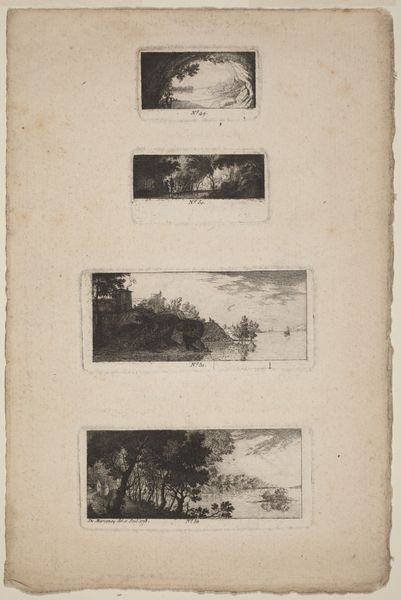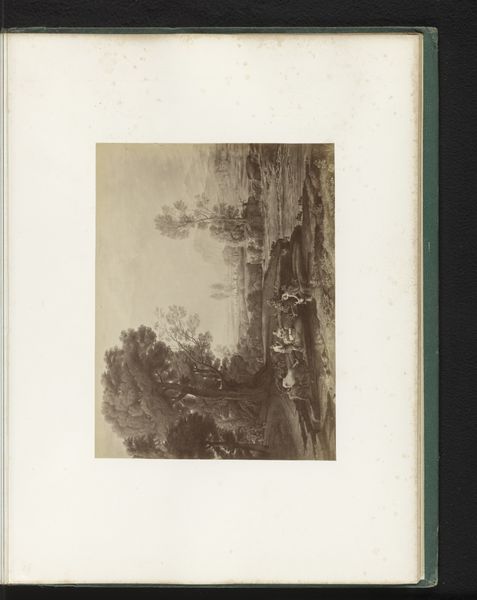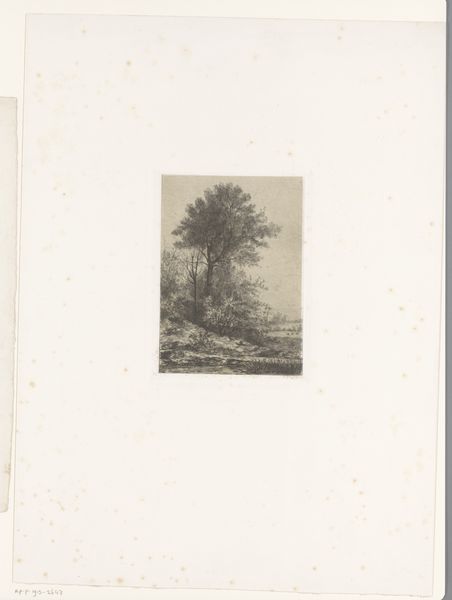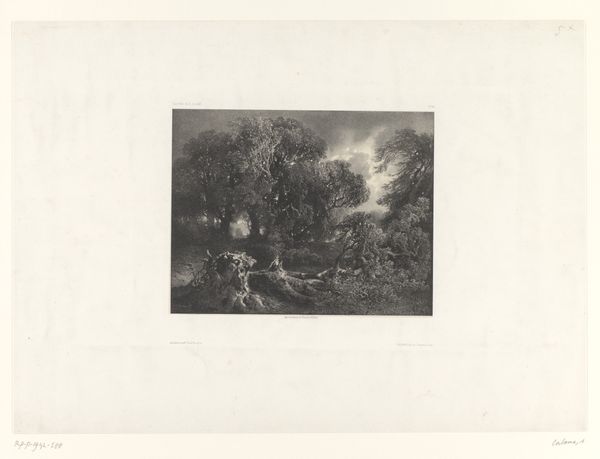
drawing, print, etching, paper, engraving
#
drawing
# print
#
etching
#
landscape
#
paper
#
engraving
Dimensions: 151 × 85 mm (top plate); 151 × 85 mm (bottom plate)
Copyright: Public Domain
Curator: Immediately striking—isn’t it?—is how Wilhelm von Kobell uses light and shadow in this combined print and drawing to create a sense of depth within such a small space. Editor: Yes, each diminutive etching, these *Two Italian Landscapes*, projects a distinct mood, one almost pastoral, the other a somber path forward. What can you tell us about von Kobell? Curator: Von Kobell, working without a definitive date on these, clearly plays with texture in these Italian scenes. Observe in the top image how he juxtaposes the rough texture of the overgrown bank with the distant, more clearly defined structures of a village. Editor: It is interesting to consider these prints within the larger context of landscape art in the 18th and 19th centuries. Representations of nature were not merely about depicting scenes, but often reflected socio-political ideas concerning land ownership, national identity, and the burgeoning concept of tourism. Were these mass-produced for a growing middle class wanting to explore the continent, perhaps? Curator: The compositions of each scene support your perspective; a solitary figure appears, yet remains secondary to the carefully balanced spatial dimensions of each tableau. This is further reinforced via horizontal and vertical lines interacting to shape and define each scene. Editor: So, it’s a balancing act: a romantic view carefully crafted. While the landscapes may suggest idealized versions of Italy, they also arguably imply a controlled vision—an appropriation, almost—mediated by cultural lenses. Curator: I find his deployment of engraving versus etching techniques fascinating here—see how each informs our understanding of what landscape constitutes? I can appreciate how he allows one process to influence another, as it allows viewers the freedom to imagine, unconstrained, what they might find there, rather than being prescriptive. Editor: Yes, that's precisely the contradiction within representations such as these: freedom within constraint. Well, it has been illuminating looking at this piece with you today. Curator: Agreed. I'm off to find another example.
Comments
No comments
Be the first to comment and join the conversation on the ultimate creative platform.
